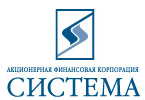|
|
|
 |
Virtual Tours round the Russian Museum The Benois Wing |
     |
The Russian Museum
»
The Benois Wing
»
Room 74
Room 74Neoclassicism — or Neoromanticism, as it is sometimes called — was another of the highly original phenomena of early twentieth century Russian art. At a time when innovative explorations in form were very much in vogue, artists like Alexander Yakovlev (1887–1938), Vasily Shukhayev (1887–1973) and Zinaida Serebryakova (1884–1967) sought inspiration in the works of medieval and Renaissance masters. Modern subjects are lightly stylised in their works in imitation of the painterly and plastic tongues of their great predecessors. In the early 1910s, the two artists performed in Arthur Schnitzler’s pantomime Colombine’s Scarf at the House of Interludes in St Petersburg. Yakovlev played the part of Harlequin and Shukhayev was Pierrot. This double self-portrait (Harlequin and Pierrot, 1914) records their interest in the theatre. The work resurrects the form of the classical portrait, with its academically distinct drawing, chiaroscuro modelling of form, local colours and textureless application of the paint. Reflecting the Neoclassical experiments of Zinaida Serebryakova in the 1910s, Bath-House (1913) was based on a multitude of life drawings and studies. The eleven young women depicted inside a Russian bathhouse seem to partake in a solemn ritual. The naked bathers are equally similar to peasants, townswomen or ancient goddesses. |
The Project “The Russian Museum: the Virtual Branch” |